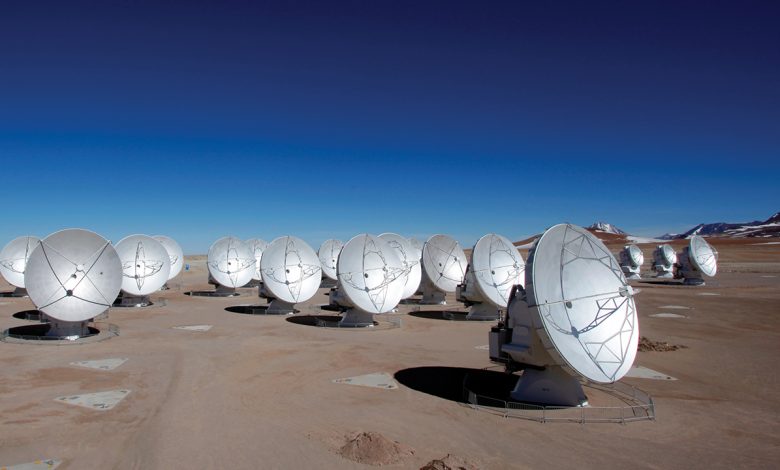Daily Current Affairs for UPSC
Atacama Large Millimetre/submillimetre Array (ALMA)
Syllabus- Space Technology [GS Paper - 3]

Context- The radio telescope known as the Atacama Large Millimeter/submillimeter Array (ALMA) can be found in the northern part of Chile’s Atacama Desert. Upgrades to the software and hardware are planned for it. ALMA will be able to collect more data and produce sharper images thanks to the upgrades.
Key Highlights
-
- ALMA is a cutting-edge telescope that studies celestial objects at millimeter and submillimeter wavelengths.
- These wavelengths enable astronomers to examine dim and distant galaxies and stars in the universe by breaking through dust clouds.
- The European Southern Observatory (ESO), the National Science Foundation (NSF) of the United States, the National Institutes of Natural Sciences (NINS) of Japan, as well as NRC (Canada), MOST and ASIAA (Taiwan), KASI (Republic of Korea), and the Republic of Chile, collaborate on the international ALMA project.
- Properties:
-
- It also has a high level of sensitivity, which enables it to pick up even the tiniest radio signals.
- A set of receivers is attached to each of its 66 antennas, each of which is designed to detect a specific wavelength range in the electromagnetic spectrum.
- ALMA makes use of a correlator in order to combine the data gathered by each antenna into a single image.
- The correlator is a powerful supercomputer that creates extremely detailed and high-resolution images of celestial objects by processing the enormous amounts of data gathered by the antennas.
- Astronomers can now examine distant galaxies, stars, and other celestial bodies with unprecedented precision thanks to this technology.
- ALMA’s discoveries include:
- Starburst galaxies that existed earlier in the universe than previously thought were discovered by ALMA in 2013.
- In addition, ALMA’s 2014 images of a protoplanetary disc circling a young star, HL Tauri, challenged existing planetary formation theories.
- The Einstein ring phenomenon, in which light from a galaxy or star passes by a massive object on its way to Earth, was observed with the telescope in 2015.
Why is ALMA in the Atacama Desert of Chile?
- Because the millimeter and submillimeter waves it observes are extremely susceptible to atmospheric water vapour absorption on Earth, it is located on the Chajnantor plateau in Chile’s Atacama Desert at an elevation of 16,570 feet (5,050 meters) above sea level.
- Also, the desert is the driest place on earth, so most nights don’t have any clouds or moisture that blocks light, making it a great place to look at the universe.





.png)



